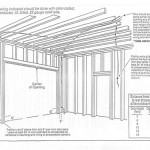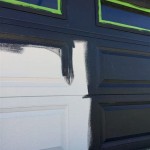How to Build Cinder Block Garage Walls
Constructing cinder block garage walls involves several key steps, from meticulous planning and preparation to the actual laying of the blocks. This comprehensive guide offers a detailed overview of the process, empowering individuals with the knowledge to undertake this project effectively.
Planning and Preparation
Proper planning and preparation are crucial for a successful outcome. This phase encompasses several essential aspects:
- Check Local Building Codes: Before commencing any construction, thoroughly research and adhere to all local building codes and regulations. These codes dictate specific requirements for wall height, foundation depth, reinforcement, and other crucial details.
- Obtain Necessary Permits: Secure all necessary permits from the relevant local authorities before starting the project. This ensures compliance with regulations and avoids potential legal issues.
- Calculate Material Needs: Accurately calculate the number of cinder blocks, mortar, rebar, and other materials required. Consider factors like wall dimensions, openings for doors and windows, and wastage.
- Prepare the Site: Clear the construction site of any debris, vegetation, or obstructions. Level the ground to ensure a stable and even foundation.
Laying the Foundation
A solid foundation is paramount for structural integrity. The following steps outline the foundation laying process:
- Excavate and Pour Footings: Excavate trenches for the footings according to local building codes. Construct concrete footings with appropriate reinforcement to support the weight of the walls.
- Install a Leveling Course: Lay a leveling course of concrete over the footings to create a smooth and level surface for the first course of cinder blocks.
- Apply Waterproofing Membrane: Apply a waterproofing membrane to the foundation to protect against moisture penetration, which can lead to structural damage.
Building the Walls
With the foundation set, the wall construction process can begin:
- Lay the First Course: Starting at the corners, lay the first course of cinder blocks on the prepared foundation, ensuring proper alignment and spacing. Use a level to check for accuracy.
- Apply Mortar: Apply a consistent layer of mortar to the foundation and the ends of each block, creating a strong bond.
- Place and Level Blocks: Carefully place each block onto the mortar bed, tapping it gently into place and ensuring it is level and plumb.
- Insert Rebar: Insert rebar into the designated cores of the cinder blocks to enhance structural strength and stability, particularly in areas prone to earthquakes or high winds. Fill the cores with concrete after placing the rebar.
- Continue Laying Courses: Repeat the process of applying mortar, placing blocks, and inserting rebar for subsequent courses, ensuring each course is level and properly aligned with the previous one.
- Install Lintels: Install lintels above door and window openings to support the weight of the blocks above. Lintels can be precast concrete, steel, or other suitable materials.
- Check for Plumb and Level: Regularly check for plumb and level throughout the construction process to maintain structural integrity and prevent leaning or bowing.
Finishing Touches
Once the walls reach the desired height, several finishing touches are necessary:
- Install Wall Caps: Place wall caps on top of the walls to provide a finished look and protect the top course of blocks from weathering.
- Apply Sealant: Consider applying a sealant to the exterior of the walls to further protect against moisture penetration and enhance durability.
Tools and Equipment
Having the correct tools and equipment is essential for efficient and effective construction:
- Mortar Mixer: A mortar mixer simplifies the process of mixing mortar, ensuring a consistent blend.
- Trowels: Various trowels are used for applying and shaping mortar.
- Level: A level ensures accurate placement and alignment of the blocks.
- String Line: A string line helps maintain straight lines during construction.
- Safety Gear: Safety glasses, gloves, and sturdy footwear are essential for personal protection.
Working with Mortar
Properly mixing and applying mortar is critical for the strength and durability of the walls.
- Mixing Mortar: Follow the manufacturer's instructions for mixing mortar, ensuring the correct proportions of cement, sand, and water.
- Mortar Consistency: The mortar should have a workable consistency, not too wet or too dry.
- Applying Mortar: Apply a consistent layer of mortar to the foundation and the ends of each block, creating a full mortar bed.

How To Build A Garage Work Part 1

Block Garage Foundation

Hey Mike Have Ya Ever Adding On To An Existing Building Hansen Buildings

Building A Cinder Block Garage What To Know And Avoid

Block Garage Foundation

Building A Cinder Block House Home Builders In Chicago Il

How To Build Block Walls And Frame A Roof Tarpon Springs Fl Garage Addition

Build An Off Grid Bunkhouse Garage Cellar Backwoods Home

Jacking Up Concrete Block Wall The Garage Journal

Dayz Epoch How To Craft Cinder Block Garage Wall
Related Posts








